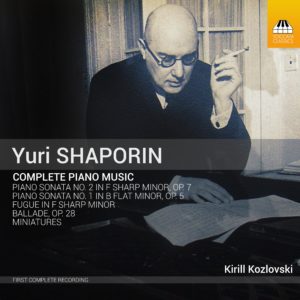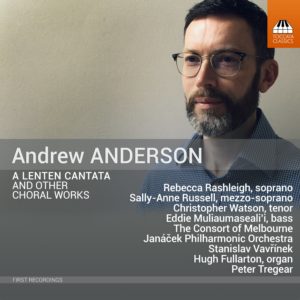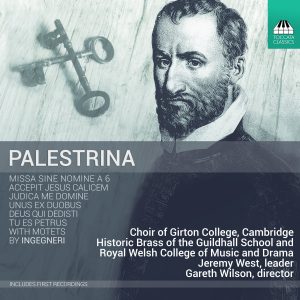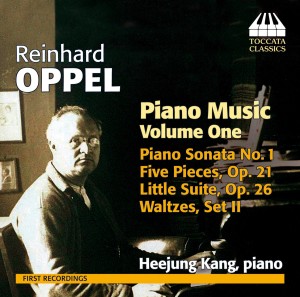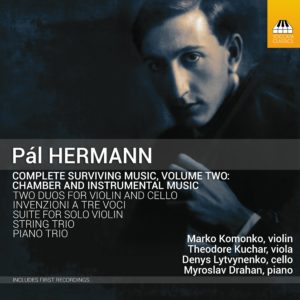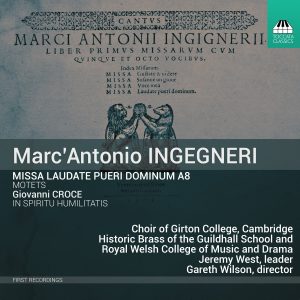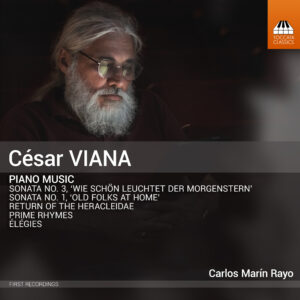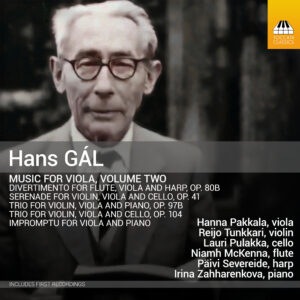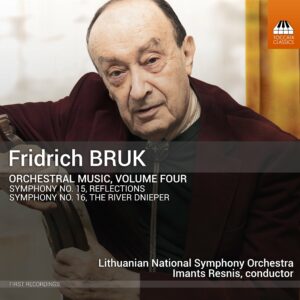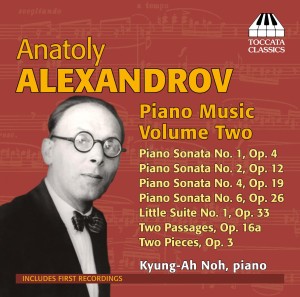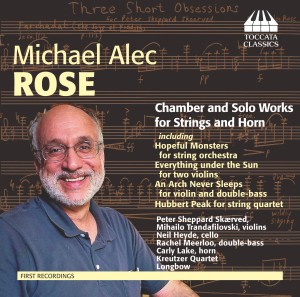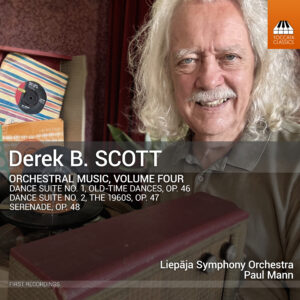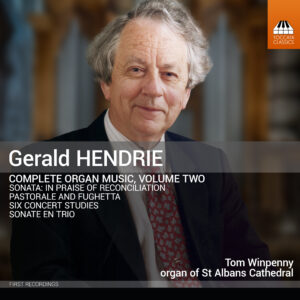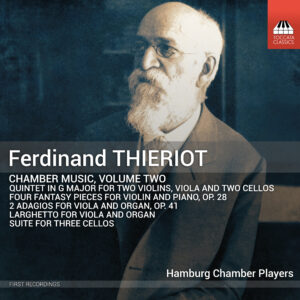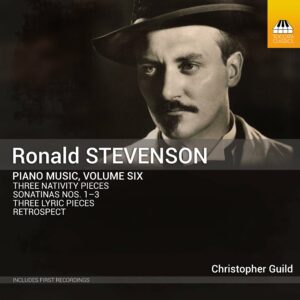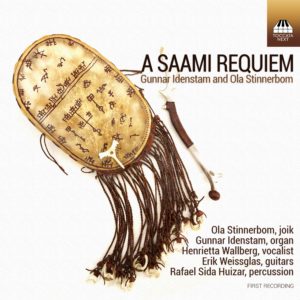Search Results for "Space Wolf: The First Omnibus mp3 torrent" – Page 12
Yuri Shaporin: Complete Piano Music
With its roots in the tradition of Borodin and Mussorgsky, the music of the Ukrainian- born Soviet composer Yuri Shaporin (1887–1966) sits between the late Romanticism of Skryabin and the harder edges of Shostakovich and Prokofiev, blending a mastery of counterpoint with an acute sense of Russian keyboard colour. In Shaporin’s piano music his fondness for the epic – expressed in two large-scale sonatas and a mighty passacaglia – is contrasted with a number of gentle, almost whimsical miniatures.
Kirill Kozlovski, piano
Andrew Anderson: A Lenten Cantata and Other Choral Works
In spite of the differences of time and distance, the choral works of the Australian composer Andrew Anderson (born in Melbourne in 1971) further the English cathedral tradition of such composers as Finzi and Howells, in music concerned particularly with lyricism and with clarity and directness of expression.
Rebecca Rashleigh, soprano (Track 5)
Sally-Anne Russell, mezzo-soprano (Tracks 3, 17)
Christopher Watson, tenor (Track 3)
Eddie Muliaumaseali’i, bass (Track 7)
The Consort of Melbourne (Tracks 2, 4, 6, 8, 9–16)
Janáček Philharmonic Orchestra (Tracks 1-3, 5-8, 17)
Pavel Doležal, violin (Track 4)
Stanislav Vavřínek, conductor (Tracks 1–3, 5–8, 17)
Hugh Fullarton, organ (Tracks 9, 15, 16)
Peter Tregear, choirmaster (Tracks 2, 4, 6, 8), conductor (Tracks 9–16)
Palestrina: Missa sine nomine a6
Renaissance polyphony is generally held to be stately, calm, reassuring. But this pro- gramme of Palestrina’s six-part Missa sine nomine, complemented by five of his motets and three by Marc’Antonio Ingegneri (c. 1535/36–92), was recorded after the Choir of Girton College, Cambridge, had undertaken a tour of Israel and Palestine. There the music and its texts (‘How shall we sing the Lord’s song in a strange land?’) took on an extraordinary poignancy, with the dispossession and desperation of thousands of years ago animating the restrained dignity of Palestrina’s counterpoint with an unexpectedly topical intensity.
Choir of Girton College, Cambridge
Historic Brass of the Guildhall School and Royal Welsh College of Music and Drama
Jeremy West, leader
James Mitchell, organ (Track 8)
Lucy Morrell, organ (Track 13)
Gareth Wilson, director
Reinhard Oppel: Piano Music, Volume One
Reinhard Oppel (1878–1941) was a major figure in inter-War Germany, as composer, teacher and theoretician. His rich, late-Romantic music encompasses symphonies, chamber and choral music, songs and works for piano. His music went underground in East Germany – literally: after World War II, when his family fled west from the occupying Russian army, they hid his music under the garden shed and there it remained, unknown, until the fall of Communism, when his son was able to return and retrieve it. This first CD of his heart-warming, Dvořákian piano music begins a series of releases intended to win Oppel’s music the audience it deserves.
Heejung Kang, piano
Pál Hermann: Complete Surviving Music, Volume Two
Pál Hermann, born in Budapest in 1902, was not only one of the leading cellists of his generation; he was also an important composer, one of the major figures in Hungarian music in the generation after his teachers Bartók and Kodály. But since only two of his works were published before his early death – in 1944, at the hands of the Nazis – and many more of them were lost, he has not had the esteem that he deserves. The works on this second volume of his surviving compositions – here mostly chamber works for strings, several in their first recordings – have the wiry humour, sprung and spiky rhythms and Hungarian melos that mark him out as a worthy successor to Bartók – and hints at how much was lost with his murder.
Marko Komonko, violin
Theodore Kuchar, viola (Tracks 9, 10, 15)
Denys Lytvynenko, cello (Tracks 1–3)
Myroslav Drahan, piano (Track 16)
Marc’Antonio Ingegneri: Missa Laudate pueri Dominum
The Cremonese composer Marc’Antonio Ingegneri (c. 1535/36–92) is chiefly remembered as the teacher of Claudio Monteverdi while, for well nigh 500 years, his own achievements were left to sit in the shadows. This pioneering recording reveals Ingegneri to have been one of the masters of his age, writing music of breathtaking richness and beauty: the polychoral works heard here combine learned, intricate counterpoint with the kind of sheer sonic thrill that brings a shiver of physical excitement.
Choir of Girton College, Cambridge
Historic Brass of the Guildhall School and Royal Welsh College of Music and Drama
Jeremy West, leader
James Mitchell and Wayne Weaver, organ
Gareth Wilson, director
First recordings
César Viana: Piano Music
The Portuguese composer César Viana – born in England, in 1963, and now resident in Spain – is an all-round musician: conductor, pianist, early-music enthusiast, folklorist and flautist, with a special interest in the shakuhachi, the Japanese bamboo flute. His resulting familiarity with Zen Buddhism has left its mark on his music, where the clean lines of Japanese art combine with a fondness for the contrapuntal textures that form the basis of much European art-music – imagine Bach and Hindemith in the formal elegance of a stone garden, warmed by a touch of western wit.
Carlos Marin Rayo, piano
Hans Gál: Music for Viola, Volume Two
Hans Gál (1890–1987) wrote extensively for the viola, first as a major composer in the German-speaking world in the 1920s and ’30s, and then as a leading cultural figure in post-War Edinburgh, where he had taken refuge after the Nazis seized power in his native Austria. This second volume of his music for viola spans four decades, with four trios from before and after that dislocation, each with its own background, sound-world and personality, although they are unified by Gál’s gift for melody, counterpoint and poised, elegant chamber writing.
Hanna Pakkala, viola
Reijo Tunkkari, violin
Lauri Pulakka, cello
Niamh McKenna, flute
Päivi Severeide, harp
Irina Zahharenkova, piano
Fridrich Bruk: Orchestral Music, Volume Four
This fourth instalment of the recent symphonic output of Fridrich Bruk (born in Ukraine in 1937 but a Finnish resident since 1974) brings two earlier works – from when Bruk was merely in his late seventies. His Symphonies Nos. 15 and 16 – both predicated on Bruk’s concern for the environment – inhabit the sound-world that has become familiar from his more recent symphonies: almost a stream of consciousness expressed through wildly inventive orchestral writing in a kaleidoscope of colour and counterpoint, sitting somewhere between Villa-Lobos and Pettersson in its profligate abundance.
Lithuanian National Symphony Orchestra
Imants Resnis, conductor
Anatoly Alexandrov: Piano Music, Volume Two
Anatoly Alexandrov (1888-1982) is one of the forgotten figures of the Russian school of pianism that embraced Taneyev, Rachmaninov, Skryabin, Shostakovich, Gilels and so many other composers and pianists. Alexandrov composed fourteen sonatas and much else for piano in an attractive late-Romantic style that owes much to Nikolai Medtner, his teacher and friend. The reviewer for MusicWeb International called Vol. 1 of this series a 'superb debut-disc' and commented that Kyung-ah Noh 'plays with immense power when called for, but is equally able to command the subtlest “pianissimo”.
Kyung-Ah Noh, piano
Michael Alec Rose: Chamber and Solo Works for Strings and Horn
In 2004 the American composer Michael Alec Rose (born in 1959 in Philadelphia) met the English violinist Peter Sheppard Skærved. That meeting sparked off a productive friendship: Rose has since written a number of works for Sheppard Skærved and his musician colleagues, pieces marked by striking emotional directness, balancing warm lyricism and mordant wit.
Michael Alec Rose, bell
Peter Sheppard Skærved, violin, director
Mihailo Trandafilovski, violin
Morgan Goff, viola
Neil Heyde, cello
Kreutzer Quartet, string quartet
Rachel Meerloo, double-bass
Carly Lake, horn
Longbow, ensemble
Derek B. Scott: Orchestral Music, Volume Four
Derek Scott, born in Birmingham in 1950, has a long history of engagement with the British music hall and other forms of light entertainment, as both historian and performer. Many of his own compositions attest to this interest in popular styles, with his craftsmanship and natural feeling for a good tune producing music of immediate appeal. One of his two recent Dance Suites takes its cue from ska, the twist and other enthusiasms from the early 1960s, and the other from older dance favourites. Time was when works like Arthur Benjamin’s Jamaican Rumba and Percy Faith’s arrangement of Alfvén’s Swedish RhapsodyNo. 1 could be heard on every domestic radio and record-player; these good-natured Dance Suites recapture some of that lost innocence and its relaxed energy – but his Serenade, another recent composition, touches gently on deeper feelings.
Liepāja Symphony Orchestra
Paul Mann, conductor
Gerald Hendrie: Complete Organ Music, Volume Two
The organ music of Gerald Hendrie – born in England in 1935 but resident in France since 1996 – encompasses a huge range of influences, among them the organist-composers who went before him (not least Franck, Dupré and Messiaen), dodecaphony, mediaeval plainchant and modality and jazz. The resulting works are as varied as the styles that fed into them, from grandiose to gentle, from severe to whimsical, from lyrical to lively. The mighty, 25-minute Sonata: In Praise of Reconciliation uses whimsical references to two cities bombed in the Second World War – the ‘Coventry Carol’ and the ‘Dresden Amen’ – to make a monumental plea for peace.
Tom Winpenny, organ of St. Albans Cathedral
Ferdinand Thieriot: Chamber Music, Volume Two
The Hamburg-born Ferdinand Thieriot (1838–1919) not only shared a teacher – Eduard Marxsen – with Brahms; both composers use a very similar musical language, one which is richly melodic and effortlessly contrapuntal. The musicologist Wilhelm Altmann wrote that ‘Thieriot’s chamber music is without exception noble and pure. He writes with perfect command of form and expression’ – as the works on this second Toccata Classics volume prove, in their exquisite balance of depth and beauty.
Hamburg Chamber Players
Ian Mardon, violin
Matthias Brommann, violin
Julia Mensching, viola
Olga Dowbusch-Lubotsky, cello
Suren Anisonyan, cello
Clovis Michon, cello
Andrea Merlo, piano
Alexander Bürkle, organ
Ronald Stevenson: Piano Music, Volume Six
This sixth instalment in Christopher Guild’s survey of the piano music of Ronald Stevenson (1928–2015) on Toccata Classics concentrates on works from the beginning of his career, most of it written after his decisive encounter with the music of Busoni. Although Stevenson had not yet moved to Scotland, the influence of Scottish folksong can be heard in some of these pieces, all of which are cast in the lyrical counterpoint that was a hallmark of Stevenson’s mature style.
Christopher Guild, piano
A Saami Requiem
A Saami Requiem is an extraordinary meeting-place of musical cultures – western classical, Sámi yoik, Nordic folk-dance, electric rock, blues, improv and more. It takes the form of a journey to Saajva, the Kingdom of Death in Sámi religious practice. With it the Swedish organist Gunnar Idenstam and Sámi artist Ola Stinnerbom provide a parallel to the Christian Requiem, with Ola Stinnerbom as Noite, the shaman who acts as guide to the Kingdom of Death – and back to this life, celebrated in the uplifting closing hymn. Some of the percussion sounds are sampled from traditional Sámi drums made by Ola Stinnerbom after ancient models; the electric guitars provide a link to rock groups like Deep Purple and King Crimson; and Gunnar Idenstam’s unmistakable style marries the French organ tradition with the alluring world of Swedish folk-music.
Ola Stinnerbom, yoik (Tracks 2–14)
Gunnar Idenstam, organ (Tracks 1–7, 9–14)
Henrietta Wallberg, vocalist (Tracks 7, 8, 10)
Erik Weissglas, guitars (Tracks 3–6, 9, 12–14)
Rafael Sida Huizar, percussion (Tracks 3–6, 8, 10–14)
Stay In the Know
JOIN THE TOCCATA NEWSLETTER
"*" indicates required fields
By visiting our site, you agree to our privacy policy regarding cookies, tracking statistics, etc.
